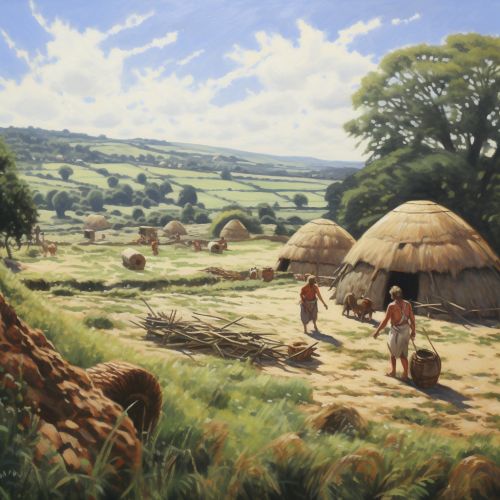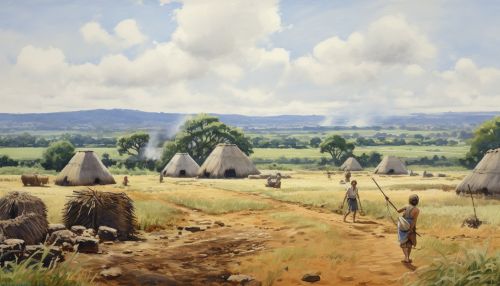Neolithic Revolution
Introduction
The Neolithic Revolution or the (First) Agricultural Revolution was a fundamental change in the way people lived. The shift from hunting & gathering to agriculture led to permanent settlements, the establishment of social classes, and the eventual rise of civilizations. The Neolithic Revolution is considered a major turning point in human history which occurred around 10,000 BC.


Origin of the term
The term "Neolithic Revolution" was coined in the 1920s by V. Gordon Childe, an Australian archaeologist. Childe was the first to synthesize data on the shift towards agriculture and settlement. He described the Neolithic Revolution as the first in a series of revolutions that human societies underwent.
Causes
Several theories have been proposed to explain the origins of the Neolithic Revolution. The most widely accepted one is the Oasis Theory proposed by Childe. According to this theory, climate change at the end of the last Ice Age led to the creation of fertile oases, which attracted wild animals and plants, leading to the domestication of these species.
Another theory is the Population Pressure Theory, which suggests that increasing population density forced humans to find new food sources. They began cultivating wild grains and animals to meet their food needs.
The Hilly Flanks Hypothesis proposed by Robert Braidwood suggests that agriculture began in the hilly flanks of the Taurus and Zagros mountains, where the climate was stable and there was a wide variety of wild wheat and pulse species.
Development of agriculture
The development of agriculture during the Neolithic Revolution was not a single event but a process that took place over millennia. It involved the domestication of plants and animals, the development of farming techniques, and the creation of permanent settlements.
The first crops to be domesticated were wheat, barley, peas, lentils, and flax. These crops were probably chosen because they were easy to grow, had high yields, and could be stored for long periods.
The domestication of animals also played a crucial role in the Neolithic Revolution. The first animals to be domesticated were dogs, sheep, goats, pigs, and cattle. These animals provided meat, milk, wool, and labor.
Impact on society
The Neolithic Revolution had a profound impact on human society. The shift from a nomadic lifestyle to settled farming led to the development of social stratification, as some individuals became more wealthy and powerful than others. This led to the emergence of leaders and the development of complex societies.
The Neolithic Revolution also led to significant changes in human culture. The development of agriculture allowed for the creation of surplus food, which could be stored and traded. This led to the development of trade networks and the creation of complex economies.
The Neolithic Revolution also had a significant impact on the environment. The clearing of land for agriculture led to deforestation, while the domestication of animals led to overgrazing. These changes led to soil erosion and the loss of biodiversity.
Conclusion
The Neolithic Revolution was a major turning point in human history. It marked the transition from a nomadic lifestyle to settled farming, leading to the development of complex societies and cultures. Despite its profound impact, the causes and processes of the Neolithic Revolution are still a subject of debate among archaeologists and anthropologists.
